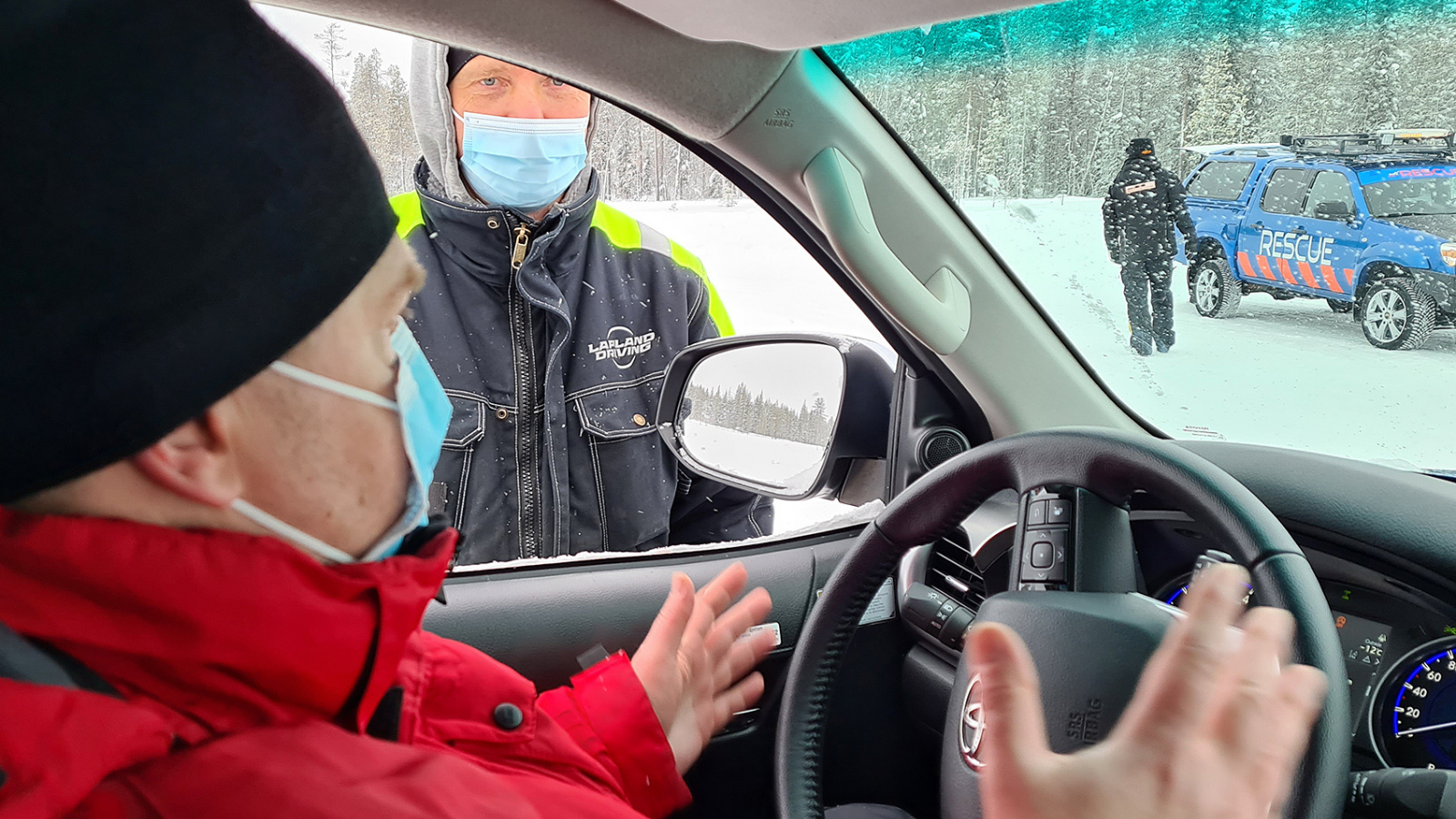February 25, 2021
Seven members of Agnico Eagle Finland’s regional mineral-exploration team gathered at Levi Rally Center one morning in February. There was excitement in the air, because their winter-driving course was about to start.
Before the course, senior exploration geologist Jari Ylinen said, “We drive in all kinds of weather every week and on many types of road, which often haven’t even been plowed. We hope to learn more about car-handling in the course.”
Levi Rally Center entrepreneur Jani Ylipahkala explained that it isn’t possible to practice handling extreme situations in normal traffic. At his facility, he said, you can do this in a safe environment.
Prediction – the starting point and ultimate goal
Many of the course participants had experience of dangerous situations and running into a moose or a reindeer. “A moose collision happens so quickly that you don’t even have time to hit the brake. Today, we will learn how to brake in the right way,” Ylipahkala told the participants.
Before the practical training, he repeatedly emphasized that calm and predictive driving is key to road safety: “Safety happens between the driver and the steering wheel.”
The right kind of equipment
When venturing into the wilderness, explorers equip the vehicle with certain basic supplies. “In addition to the usual road-safety-related equipment and the items specified by Agnico Eagle, we always take enough food and warm clothing with us. The equipment also includes an emergency location-transmitter and kindling supplies,” the participants reported.
Now, a few logs will be added to the list of supplies, in line with a tip from Ylipahkala. These are in case one has to wait a while for help to arrive in the wilderness. ”A snowmobiler once had to tear up parts of his seat to feed the fire,” recalled Ylipahkala, laughing.
Also, in addition to a snow shovel, he recommended having a small piece of reinforced-steel netting. He explained, “If your car gets stuck in the snow, this provides better grip and helps to free your car.”
Loading the vehicle safely
Explorers often transport pallets and smaller items, but sometimes the load can include stones too. Addressing such matters, the training also covered appropriate loading – something that many of us often overlook out of sloppiness or because we’re in a rush.
It is good to understand how the mass and positioning of the load affect vehicle behavior. Properly securing the load is extremely important. “A shovel hurled from the bed of a vehicle or trailer can cause serious damage when hitting the windshield of an approaching car,” warned Ylipahkala.
Surprises with braking
It was now time to head out onto the track. Participants’ first task was to zigzag through the cones on the track. Then, the driver was told to speed up to 50 km/hour and hit the brakes as hard as possible before reaching an obstacle. After braking, the participant was to swerve around the obstacle immediately.
As driving speeds approached 60 kph, the vehicle touched the snow at the side of the road during swerving around the obstacle. “The speed doesn’t make a big difference in brake tests, but it affects the controllability of the vehicle considerably,” said Ylinen.
On longer track sections, the participants were allowed to increase speed and practice avoiding unexpected obstacles safely.
“We learned a lot in this course, particularly since we could practice with our own work vehicles,” said Ylinen. He continued, “We now have a better understanding of how the vehicle behaves on slippery roads, during fast braking, and on sharp turns, and we know how this is affected by driving speed. It is also useful to be reminded of factors related to loading.”
Finally, the participants had a chance to try driving a rally car. “It was an eye-opening experience to be able to compare the controllability and behavior of rally cars with pickup trucks. The excellent grip of rally-car tires with spikes in sharp turns came as a real surprise,” said Ylinen.


